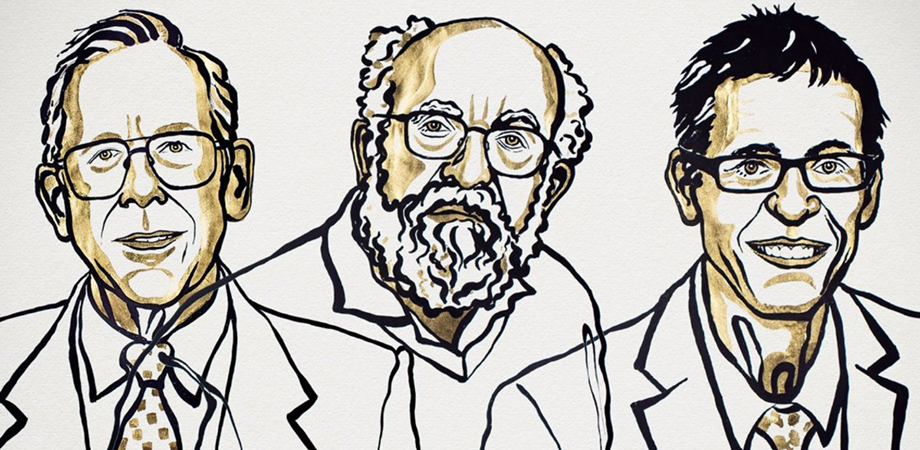2019 Nobel Prize in Physics Recognizes Astronomical Leaps

The 2019 Nobel Prize in Physics goes to three individuals working to understand the formation of the Universe and Earth's place in it: James Peebles, Michel Mayor, and Didier Queloz.
One half of the award goes to cosmologist James Peebles, the Albert Einstein Professor Emeritus of Science at Princeton, "for contributions to our understanding of the evolution of the universe and Earth's place in the cosmos."
In 1965, Peebles published the first findings of the cosmic microwave background (CMB), which is a hiss of microwaves leftover from the cooling of our newly formed Universe many millennia after the Big Bang. His findings represented a triumph for the "big bang" description of the Universe. Prior to Peeble's study of the cosmos, knowledge about the makeup of the Universe was sparse and theoretical, but discovery of the CMB triggered a series of experiments and theoretical calculations over the next six decades that provided a more solid mathematical foundation for the study of the cosmos.
In the 1980s, Peebles also proposed a possible solution to the nagging question, "Where in the cosmos are the seeds of today's stars and galaxies?" His answer: invisible dark matter. According to Claudia Mignone, who wrote about 50 years of cosmic microwave background for Inspired by Light: Reflections from the International Year of Light, dark matter manifests itself only via gravity, unlike the ordinary matter that makes up planets and the stuff on them:
"Adding dark matter to the young Universe cocktail means that today's structures could have their origin in tiny fluctuations of this dark component, which does not interact with photons, leaving no imprint on the CMB. After the release of CMB, particles of ordinary matter would feel the gravitational pull of denser clumps of dark matter, starting to form structure and leading to the birth of stars and galaxies."
However, some in the astronomy community have reacted negatively to Peeble's award, pointing to the past omission of Vera Rubin for the Nobel Prize in Physics. Rubin proved the existence of dark matter and is thought to have revolutionized modern thinking about the Universe. Although for many years she was considered a leading candidate for the prize, her death in 2016 made her ineligible for future Nobel Prize consideration.
Theoretical physicist Chanda Prescod-Weinstein tweeted, "I think for many women in cosmology, the treatment of Vera Rubin by the Nobel Prize will always be a collective wound."
Transiting Exoplanets
The other half of the award is given jointly to two astrophysicists: Michel Mayor, professor emeritus of astronomy at the University of Geneva, and Didier Queloz, professor of physics at the Cavendish Laboratory at Cambridge University and the University of Geneva, "for the discovery of an exoplanet orbiting a solar-type star."
Although common sense suggests that Earth is not the only planet orbiting a solar-type star in the vast Universe, there was no evidence of this fact until Mayor and Queloz found a giant planet orbiting 51 Pegasi, a star similar to the Sun, in 1995. They observed the exoplanet via the oscillation of light patterns emitted from the star. This discovery initiated a revolution of astronomical instrumentation and scientific understanding of planet formation and evolution.
A few years ago, the term "transiting exoplanet" was familiar only to those working in astronomy, but the 2018 launch of the Transiting Exoplanet Survey Satellite (TESS) brought the concept to the awareness and imagination of the public.
TESS's mission is to survey the brightest stars for transiting exoplanets as they pass in front of their home star and cause its brightness to dim. Tell-tale drops in the brightness of a star indicate an orbiting planet regularly transiting across the face of a star.
After a year and a half in orbit, TESS is delivering on its promises: data has confirmed numerous planets orbiting stars, some as close as 31 light years away. George Ricker, TESS principal investigator at MIT's Kavli Institute for Astrophysics and Space Research, is excited by the quantity of data generated by the first year of observations. As of mid-August, TESS had discovered 21 planets and more than 850 candidate exoplanets. Those numbers have since increased.
"The pace and productivity of TESS in its first year of operations has far exceeded our most optimistic hopes for the mission," said Ricker. "In addition to finding a diverse set of exoplanets, TESS has discovered a treasure trove of astrophysical phenomena, including thousands of violently variable stellar objects."
The 2019 Nobel Prize in Physics is awarded for astronomical discoveries in the months leading up to the 2020 Decadal Survey. Known to the astronomy community as the "decadal," this panel, sponsored by NASA, the National Science Foundation, and the US Department of Energy, will use input from the scientific community to prioritize the large space mission that will succeed James Webb Space Telescope (JWST), which was an outcome of the 2000 decadal survey, and Wide-Field Infrared Survey Telescope (WFIRST), the highest priority large space mission from the 2010 decadal survey.
The four large missions currently under study for the upcoming decadal are the Habitable Exoplanet Observatory (HabEx), Large UV-Optical-Infrared Surveyor (LUVOIR), Origins Space Telescope (OST), and Lynx X-Ray Observatory. Most of these proposals aim to expand our knowledge and discovery of exoplanets, work initiated by Mayor and Queloz's hallmark exoplanet discovery in 1995.
SPIE congratulates the three new Nobel laureates and the teams of scientists and researchers who supported their visionary accomplishments.
Related Content:
Peebles, Mayor, and Queloz SPIE Proceedings Papers (free downloads through 2019)
2012 SPIE Astronomy Plenary by Didier Queloz: Unraveling a New Paradigm
George R. Ricker Plenary: Transiting Exoplanet Survey Satellite (TESS)
STAR GAZER: Sara Seager on Exoplanets, Exploration, and Elusive Earth Twins
Transiting Exoplanet Survey Satellite (TESS)
Novel spectrophotometer concept for the characterization of transiting exoplanets
| Enjoy this article? Get similar news in your inbox |
|



